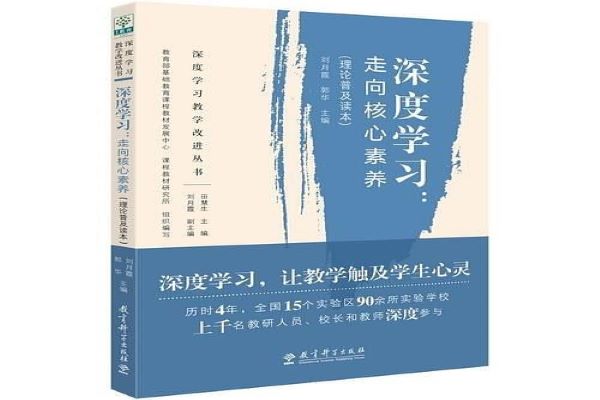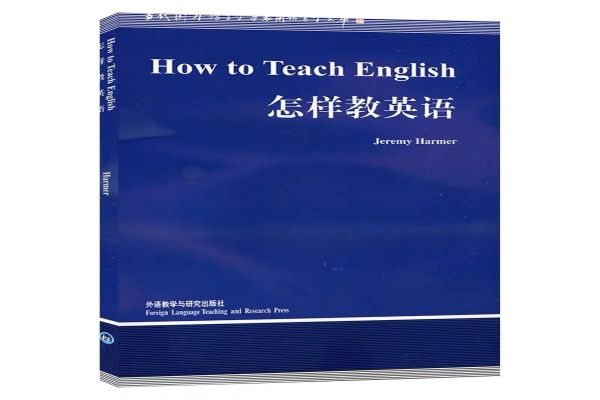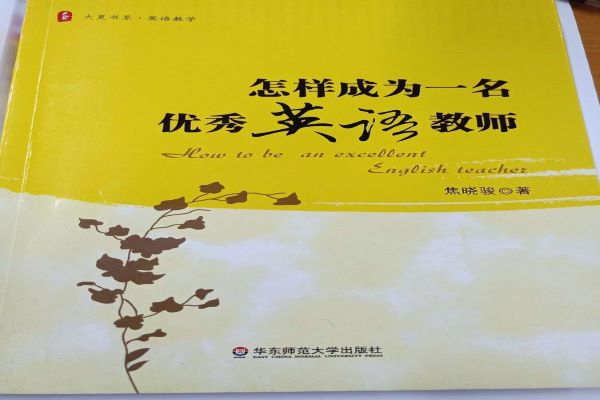


古语有云:“一月不读书,耳目失精爽”。身为一名教师,不断地阅读学习是非常重要的。在祁代来校长的带领下,工作室的小伙伴们开展了好书分享活动,共同学习,共同成长。三月好书分享,陈张霞、费玲爽、王圣洁三位老师分享了她们近期阅读的一些书籍。
《深度学习,走向核心素养》摘录:
相当长的时期内,教学理论研究及教学实践探索在教学活动的基本问题上,常常偏执一隅。例如,在涉及师生在教学中的地位与作用时,要么强调学生主体,将“学生主体”与“教师主导”对立起来,从强调“学生主体”走向“学生中心”;要么反其道而行之,强调教师的领导作用以至发展为”教师中心”。而所谓的“学生中心”,只是孤立强调“学生”的兴趣、需要、尊严而回避学生在教学中如何能够获得发展、应该承担怎样的责任;同样,“教师中心”的主张也往往是撇开现实的教学活动去抽象地谈论“教师”的素养与技能,很少关心教师在教学活动中的现实处境和教师的价值及其实现。谈及教学内容(知识,人类认识成果)时,往往孤立地关注教学内容作为认识成果本身的价值,强调被继承、被传递的重要性,很少将教学内容与学生的发展联系起来考量,也很少将学生的发展与人类的未来实践活动进行关联思考。教学内容(知识,人类认识成果)与学生经验常被看作有着天堑鸿沟的两立对立面,很少有人自觉探讨两者的共通性与连接点,因此,在以人类认识成果为主要教学内容的教学活动中,便常以极端两立的方式进行教学而不能以恰当的方式对人类经验与学生个体经验进行连接。例如,要么系统讲授(强调人类认识成果的逻辑与系统),要么自主探究( 强调学生个体直接经验的重要性);要么重过程(强调 学生经验),要么重结果( 强调人类已有经验);等等。
深度学习的理论价值,不仅在于克服机械学习、浅层学习的弊端,让学生学得主动、积极;更重要的是,要克服长期以来的种种二元对立,使教师、学生、教学内容(知识)获得高度的统一,使教学内容(人类历史文化、人类认识成果)实现其本应有的价值,使教师、学生在教学中获得最大发展,使学生能够形成有助于未来持续发展的核心素养。
读后感:
深度学习是我国全面深化课程改革、落实核心素养的重要途径。长期以来,作为教师我们勤勉而努力,但对于究竟如何在教学中实现对学生的核心素养的培养,培养学生文化意识,实现立德树人的根本任务,让学生真正做到对英语这门学科感兴趣却少有思考。绝大部分教师的教学仅仅停留在知识点的传递上,教学,离不开知识的学习,但教学绝不是把储存在书本上的知识转移到学生的头脑里再储存起来,而是要把外在于学生的、和学生没有关系的知识,在基于学情的基础上,在教学中转化为学生主动活动的对象,从而与学生建立起意义关联,并通过学生个体的主动学习转变成学生成长的养分,让学生进行有效输出。教学设计时教师应精心设计问题情境和学习任务,引发学生的认知冲突,组织深度探究的学习活动,关注对学生的持续性评价,从而真正做到教师、学生、内容三位一体。
摘录:
What elements are necessary for successful language learning in classrooms?
Classroom students don't usually get the same kind of exposure or encouragement as those who -at whatever age -are picking up the language. But that does not mean they cannot learn a language if the right conditions apply. Like language learners outside schools, they will need to be motivated, be exposed to language, and given chances to use it. We can therefore say what elements need to be present in a language classroom to help students learn effectively. We will call these elements ESA, three elements which will be present in all -or almost all-classes. They are:
Engage: this is the point in a teaching sequence where teachers try to arouse the students’ interest, thus involving their emotions.
Study: Study activities are those where the students are asked to focus in on language (or information) and how it is constructed. They range from the study and practice of a single sound to an investigation of how a writer achieves a particular effect in a long text; from an examination and practice of a verb tense to the study of a transcript of informal speech to discuss spoken style.
Activate: this element describes exercises and activities which are designed to get students using language as freely and “communicatively” as they can.
These ESA elements need to be present in most lessons or teaching sequences. Whether the main focus of the lesson is a piece of grammar(in which case there will be opportunities for Study and Activation), or whether the focus is on reading(where where there may be a lot of Activation of language knowledge in the processing of the text, but where, at some stage, the students will also Study the construction of that text or the use of some language within it), students always need to be Engaged, if possible, so that they can get the maximum out of the learning experience. Most students will want to have Studied some aspect of language, however small or of short duration, during a lesson period.
There are some exceptions to this, of course, notably in classes where an Activation exercise takes up a lot of time, for example, with a debate or a role-play or a piece of extended writing. In such cases, teachers may not want to interrupt the flow of Activation with a Study stage. But they will want to use the exercise as a basis for previous or subsequent study of language aspects which are crucial to the activity. The same might be true of an extended Study period where chances for Activation are few. But, in both these cases, the only limitation is time. The missing elements will appear, only perhaps later.
The majority of teaching and learning at lower levels is not made up of such long activities, however. Instead, it is far more likely that there will be more than one ESA sequence in a given lesson sequence or period.
To say that the three elements need to be present does not mean they always have to take place in the same order. The last thing we want to do is bore our students by constantly offering them the same predictable learning patterns-as we discussed in Chapter1. It is, instead, our responsibility to vary the sequences and content of our lessons, and the different ESA patterns that we are now going to describe show how this can be done.
How do the three elements of ESA fit together in lesson sequences?
One type of teaching sequence takes students in a straight line: first the teacher gets the class interested and Engaged, then they Study something and they then try to Activate it by putting it in to production. Here is an example of such a “Straight Arrows” sequence designed for elementary-level students.
1. Engage: students and teacher look at a picture or video of modern robots. They say what the robots are doing. They say why they like or don't like robots.
2. Study: the teacher shows students(the picture of)a particular robot. Students are introduced to 'can' and can't'(how they are pronounced and constructed)and say things like 'It can do maths' and 'It can't play the piano'. The teacher tries to make sure the sentences are pronounced correctly and that the students use accurate grammar.
3. Activate: students work in groups and design their own robot. They make a presentation to the class saying what their robot can and can't do.
We can represent this kind of lesson in the following way.
ESA
Engage→Study→Activate
ESA Straight Arrows sequence
Straight Arrows lessons work very well for certain structures. The robot example above clearly shows how can and can’t are constructed and how they are used. It gives students a chance to practise the language in a controlled way( during the Study phase)and then gives them the chance to Activate the 'new' language in an enjoyable way.
However, if we teach all our lessons like this, we may not be giving our students’ own learning styles a fair chance. Such a procedure may work at lower levels for straightforward language, but it might not be so appropriate for more advanced learners with more complex language.
读后感:
《怎样教英语》(How to teach English)的作者是英国英语教学专家杰里米•哈默(Jeremy Harmer)。在网上看到这本书时,有人说它是一本实用的英语教学用书。阅读完后,我觉得,与其说它在教我们具体的教学方法和技巧,不如说它在教我们一种教学理念——ESA。该书在第六、七、八、九、十章中讲述的:怎样教语言、阅读、写作、口语和听力,也都是以ESA为核心理念。
因此,在这本书中,最让我印象深刻的是第四章How to Describe Learning And Teaching这章。其归纳了成功的英语教学必须具备的因素:投入(Engage),学习(Study),运用(Activate)。作者认为,这三个因素是使英语教学成功必不可少的要点。无论什么教学内容,教学中都应有投入、学习、运用三要素,但它们的先后顺序可以灵活掌握。以我的理解是,投入,就是要引起学生的兴趣,让学生对你所讲述的内容感兴趣;学习,就是讲述所要学习的具体内容;运用,是学生能运用所学的新知识。而运用也是学习的最终目标,能运用所学到的内容,才是真正的学习。作者在本章中也介绍了一些教学法,不过都只是粗略的介绍。我认为,无论是什么教学法,只要符合学生的具体情况,能达到教学目标,都是可行的教学方法。
总之,与具体的教学方法相比,本书中我学到更多的是一些教学理念。书的篇章很短,在有限的文字中很难涵盖较多的教学方法,但它通过阐述一些教学技巧,把教学理念贯穿到教学中。可以说,这本书对于我今后的教学工作是大有裨益的。
摘录:
一、广阔的学术视野
想要成为一名优秀的英语教师,没有足够的理论基础就难以站到研究者的角度。作为一个教师,必须具备所教学科的知识;同时应还具备教育学和心理学方面的知识。教师的主要任务是“教书育人”,在知识逐渐信息化的今天,一名知识功底深厚、教育观念、教法灵活的教师,在课堂上方能拔动学生的心弦,才能满足学生的求知欲。在教师的引导下,学生的自主学习、合作学习、探究学习才可以深入地展开。任何时候教师的主导作用都是不容怀疑的。要让学生爱学、会学、学会、学好,教师必须爱教、会教,才能教会、教好。
二、高超的教育智慧
作为教师,我们面对的是一个个性格迥异的孩子,与学生的互动决定了真实的课堂效果。如何与学生打交道并走进他们的心灵,这就需要我们有高超的教育智慧。本书中针对如何学会与学生打交道作出了具体阐述,这对于我有很大的触动。
首先,让学生喜欢这个英语老师。想要被学生喜欢的方法有很多种:学会对学生微笑,记住学生的名字,给学生起个英文名字...教师是一个特殊的职业,我们每天面对的是孩子,微笑可以传递观向上的生活态度,几乎没有一个孩子喜欢板着面孔的老师,可是越来越的多地老师担心孩子们给点阳光就灿烂,因此慢慢收起了自己的笑容。作为一个新教师我希望能做到寓教于乐,这是一个且行且学的过程。在教学中,孩子具有明显的向师性,孩子崇拜老师如果能被老师叫出名字就会产生亲切感,记住孩子的名字这是一个教育细节,但意义非凡。
其次,倡导轻松的学习方式。作为英语教师,我们的任务不是给孩子带去负担,而是让孩子们享受学习语言的快乐。别的不敢说,针对英语单词教学,近年来自然拼读法逐渐走入视野,经过不少一线教师的研究发现,自然拼读法不失为为一个为单词识记减负的好帮手。
最后,欣赏学生是教师的本能。欣赏是一种特别的力量,它使欣赏者内心愉悦,使被欣赏着积极奋进。培根说:“欣赏者心中有朝霞、露珠和常年盛开的花朵”。说到这我很惭愧,今年从教的班级里总有很多或是智力较弱,或是调皮捣蛋的孩子,我也常常按捺不住自己内心的愤怒,说这些孩子像混世魔王一样。如果我调整自己的心态,以发展的眼光去审视这些孩子,自己内心的困顿也会一扫而光。所以孩子们都渴望被理解被尊重,当每一位教师都学会用欣赏的目光看待孩子,校园里课堂上也会充满生机与活力。
三、不断地创新思维
没有人天生具备创新思维,优秀的英语教师不断创新“冲动”通常是在教育实践过程中反思教学行为,保持进取意识的结果。
想要成为一名的优秀的创新型英语教师,首先要学会打造高效的英语课堂。传统的英语教学通常是一张嘴,一根粉笔,一个黑板走天下,而今是信息社会,新课程标准又确定了英语的工具性和人文性的特征,因此,只有以人为本,告别哑巴英语才是出路。
其次,要以教学反思激活创新思维。人们常说:“教虽有法,教无定法,贵在得法。”从我踏入教学岗位后,不止一次地听到专家和同事强调教学反思的重要意义。教学反思的过程就是专业成长的过程。叶澜教授曾经说过:“一个教师写一辈子教案不一定能成为名师,如果一个教师写三年反思可能成为名师”。反思过程就是要不断的提高自己的教育教育教学水平,改善教学效果,相信只要坚持,成功就在“灯火阑珊处”。
读后感:
寒假期间,我读了《怎样成为一名优秀的英语教师》这本书感受颇深。本书从始至终贯穿一条主旨就是:要实现有效教学,人力资源胜过技术资源。而且书中特别强调,教师所能利用和开发的最重要的人力资源就是自己的个人品质或素养。就这一点我做为一个老老师深有体会。做一名优秀的教师应该具备的一些素质及条件,对这一点我作了以下几个思考。
首先、必须具有丰富的英语专业理论知识,英语教师没有较高的专业水平,也就谈不上优秀。
第二、必须具有良好的道德品质和人格魅力,热爱教育事业,热爱本职工作,具有奉献精神,具有强烈的责任感、事业心。这是职业道德要求,一名教师专业能力再强,如果思想上有问题,责任感不强,不喜欢学生,甚至道德品质有问题,他也不可能成为一名优秀的教师。
第三、必须具有系统而全面的教育学、心理学知识,具有较强的教学能力,懂得不同年龄段学生的身心特点,能运用合理的教学方法,使学生得到最大限度的发展。这是教师职业的要求,一名教师虽然有较高的专业水平,也有满腔的教学热情,但如果不懂得教育教学规律,其必然会走“弯路”,当然离优秀就还有一段距离了。
第四、必须具备广博的文化知识和其它艺术学科基础知识,英语教师除了具备本专业的知识技能外,必须尽力扩宽其它基础知识的掌握面,以及了解其他学科基本知识技能,并能综合运用它们进行教学,在广泛的文化情景中对学生进行教育,陶冶学生的情操,提高学生的素质。这是现代教育的时代要求。
第五、必须具有先进的教学理念,善于吸纳新知识,获取新信息,并善于把这些新理念、新知识、新信息合理的运用到教学实践中,以保持与时代同步。时代的飞速发展,新学科,新技术,新知识的大量涌现,要求教师必须善于接受新理念、掌握新知识、运用新技术进行教学,优秀教师更应该如此。
第六、优秀教师必须具有创新和探索精神,无论是教学理念的贯彻,还是教学方法的选用都必须与实际需要相吻合,在实践中得到检验,只有结合各地具体情况不断的探索,大胆的创新,才能不断找出合符实际需要的东西,以满足教育教学的时代要求。
第七、必须积极参与教研、教改,一名出色的教师不光能做好教学工作,同时还要善于把教育教学工作中好的经验总结、归纳出来,并加以推广;对教育教学工作中不利于学生良好发展,不利于教学工作顺利进行的因素即时发现,找出适当的办法,加以克服;能有效的利用现有环境资源、教学设施、当地特色文化合理地组织教学,运用行之有效的教育教学方法,使学生得到最大限度的发展。
第八、必须热爱学习、善于学习,树立终身学习的思想,一名优秀的教师必须是一位爱学、善学的人,只有终身坚持不断学习,才能不断的更新自己的知识,保持与时代同步,不至于落后于时代的要求。
当然,要想成为一名出色的教师,最重要的就是要坚持的做下去,做一辈子。
撰稿:王圣杰 审核:祁代来